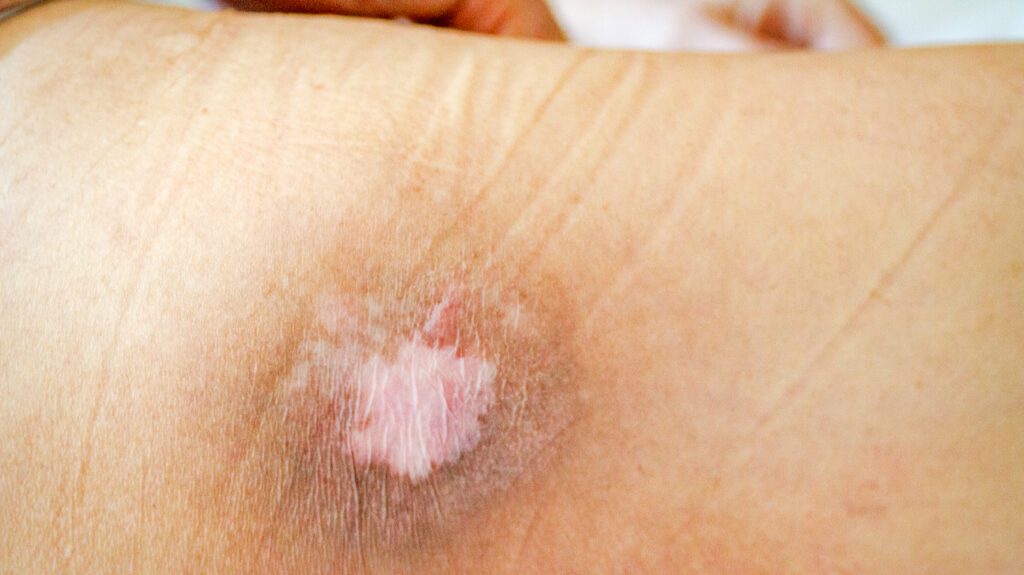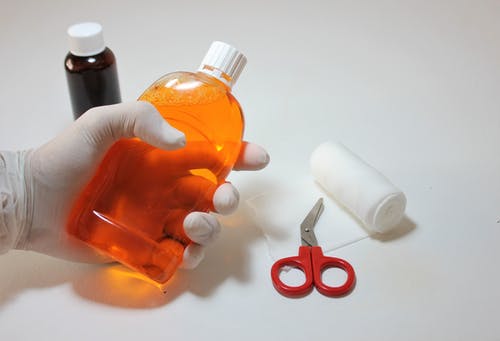Pressure Ulcers: What You Need To Know

Sores (Pressure)
Article by: Farlyn Lucas
When you are confined to a bed, the hope is that it is not a permanent situation that someday, you will return to a life of activity and movement. However, for some people, there are complications that arise simply because they are either temporarily, or permanently, confined to a bed. One of those conditions is pressure ulcers.
What Are Pressure Ulcers?
When lying prone in a bed for several days, inevitably there are going to areas that support your body more than others, and as such, experience higher levels of pressure. When this happens, those areas become abraded, irritated, and ultimately injured.
This is the essential etiology of a pressure ulcer – pressure that results in skin (and possibly tissue) injury. Because the bony prominences most often support weight, they are the areas most prone to pressure ulcers. These include, the elbows, heels, ankles, hips and tailbone. For people in a wheelchair, this often includes the buttocks, the back of the knees, the shoulder blades and spine.
This also means that one of the risk factors for developing a pressure ulcer is failure to reposition in bed so as to alleviate some of the pressure from the sensitive areas. This also means that people most at risk are those that have medical conditions that limit their ability to change positions or cause them to spend most of their time in a bed or chair.
Pressure ulcers appear as small red areas of the skin that become swollen, show changes in the skin texture of appearance, may be draining pus, and may feel tender or warm to the touch. Depending on the severity of the pressure ulcer, they can be divided into four stages, as we will see in the next section.
While pressure ulcers are defined as undue pressure on the skin that leads to skin injury, there are three main causes. This includes:
- Pressure. When constant pressure on any part of your body lessens blood flow to any area of the body, that area becomes deprived of oxygen and other nutrients to tissues. Absent these essential nutrients, skin and nearby tissues become damaged and healing becomes impaired.
- Friction. Friction occurs when the skin rubs against clothing or bedding and can make fragile skin more vulnerable to injury, especially if the skin is also moist.
- Shear. When two surfaces move in the opposite direction, the result is shear. For example, when a bed is elevated at the head, the patient can slide down in bed which results in shear between the skin and the bed material.
Along with causes, there are many risk factors that put a person at risk of developing a pressure ulcer. These include:
- Immobility. As noted above long periods of time in a bed can place undue pressure on certain areas of the body.
- Incontinence. When skin remains moist due to urine or stool, it becomes more vulnerable to irritation due to pressure.
- Lack of sensory perception. An inability to feel pain or discomfort due to a variety of neurological disorders can result in not being aware of warning signs and the need to change position.
- Poor nutrition and hydration. Healing is dependent on adequate nutrition and hydration and when these things are absent, skin breakdown cannot always be prevented, and further, skin healing becomes impaired.
- Medical conditions affecting blood flow. Any restriction of blood flow, as it is essential for health and healing, either due to pressure or a health problem, can increase the risk of developing a pressure ulcer. Some of these health conditions include diabetes and vascular disease.
What Damage Can Pressure Ulcers Cause?

To understand the damage that a pressure ulcer can cause, it is first important to understand that not all pressure ulcers are the same. Pressure ulcers can be divided into four stages, or grades, depending on their severity. The most common is the European Pressure Ulcer Advisory Panel (EPUAP) grading system, which issues higher grades for greater severity. The four stages that describe pressure ulcer severity include:
- Stage 1: In this stage the skin is discolored, appears red or dark purple, and does not blanche (turn white) when pressed with a finger.
- Stage 2: In this stage, the top layer of the skin is lost, and may resemble a blister. In this stage, the skin can typically repair itself.
- Stage 3: Stage 3 pressure ulcers represent a deeper wound that is open, extending to the fatty layer of the skin. In this stage, the pressure ulcer will take much longer to heal.
- Stage 4: Stage 4 pressure ulcers are the most severe and extend to the muscles, tendons and ligaments and eventually the bone. Here, pressure ulcers become life threatening as the muscles and bone are prone to infection.
The grading scale for pressure ulcers gives a helpful guideline for understanding and identifying the four stages of pressure ulcers. Along with this scale, it is important to understand that several other complications can occur. These include:
- Cellulitis. Known as an infection of the skin and connected soft tissues, cellulitis can cause warmth, redness and swelling of the affected area.
- Bone and joint infections. Once a pressure ulcer progresses toward stage 4, the risk of bone and joint infection increases, as these areas become exposed. These infections can reduce the function of joints and limbs.
- Cancer. Long-term, non-healing wounds (Marjolin’s ulcers) can develop into a type of squamous cell carcinoma.
- Sepsis. Sepsis is a systemic (body) infection that, although rare, becomes life threatening. Sepsis is a risk when dealing with a stage 4 pressure ulcer.
How Are Pressure Ulcers Treated?
The best treatment for a pressure ulcer is to prevent one. Through repositioning frequently, lifting one off the bed or chair, using special mattresses or cushions, and adjusting the position of the bed, the risk of developing pressure ulcers can be dramatically reduced. Skin care is another crucial component of reducing the risk of pressure ulcers. Skin should be kept clean and dry, protected with a moisturizer, and inspected daily. Lastly, general health should be observed by maintaining good nutrition and fluid intake, quitting smoking, managing stress, and exercising daily.
Once a pressure ulcer is present, however, it must be treated. While the treatment must always match the severity of the pressure ulcer, some general steps are:
- Apply dressings that speed up the healing process such as alginate, hydrocolloid, and antibiotic dressings
- Move and change position regularly (for some patients this may mean as often as every 15 minutes)
- Use specially designed mattresses or cushions, or dynamic mattresses and cushions that have a pump to provide a constant flow of air
- Eat a healthy, balanced diet
- Clean the wound and remove damaged tissue (debridement)
- In the most severe cases, surgery to remove damaged tissue and close the wound may be used
It is always the hope that good health extends into our later years and we remain active as long as possible. However, when we do become confined to a bed, many components of our health can be compromised. Pressure ulcers are one risk factor that when correctly understood, identified and treated, do not have to significantly impair health.










